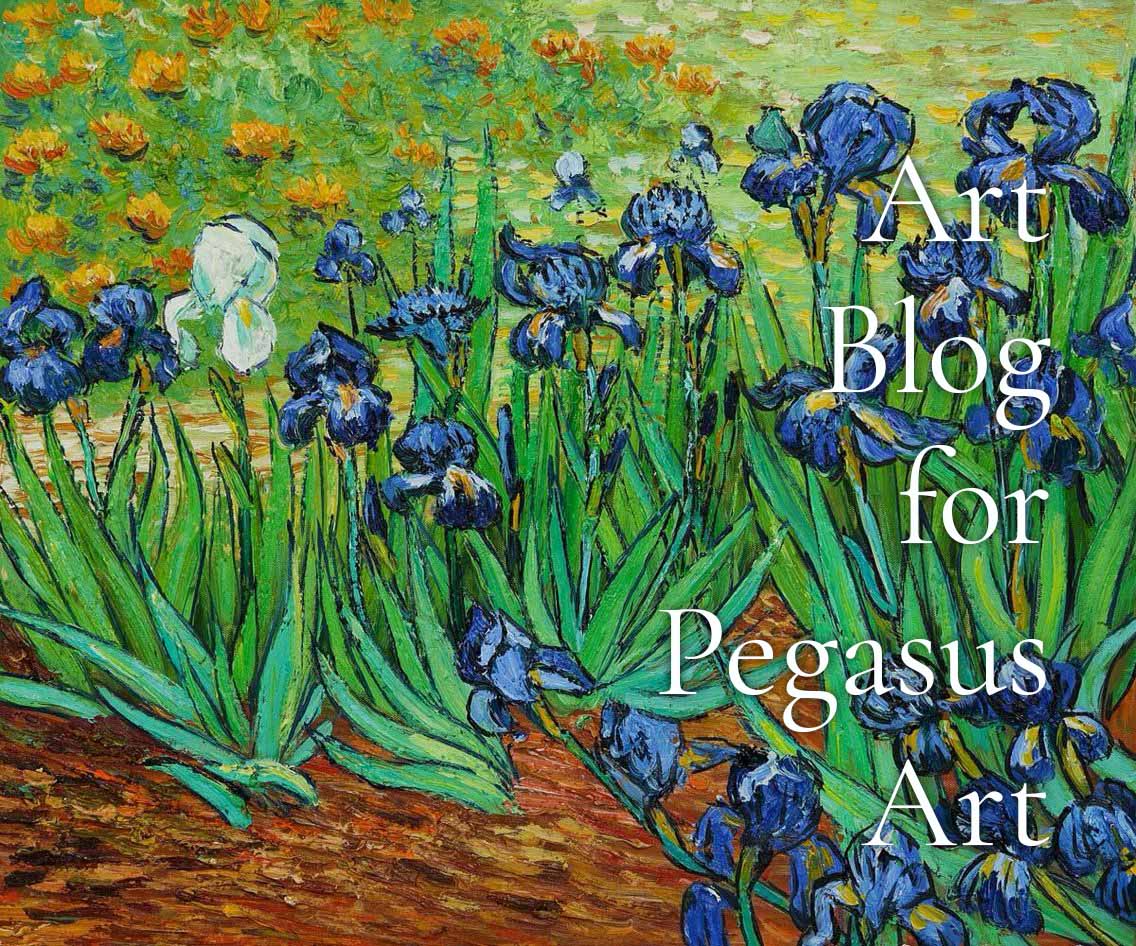The power of plants and painting ‘gave him purpose and made his life bearable.’ How much do you know about the Van Gogh iris paintings?
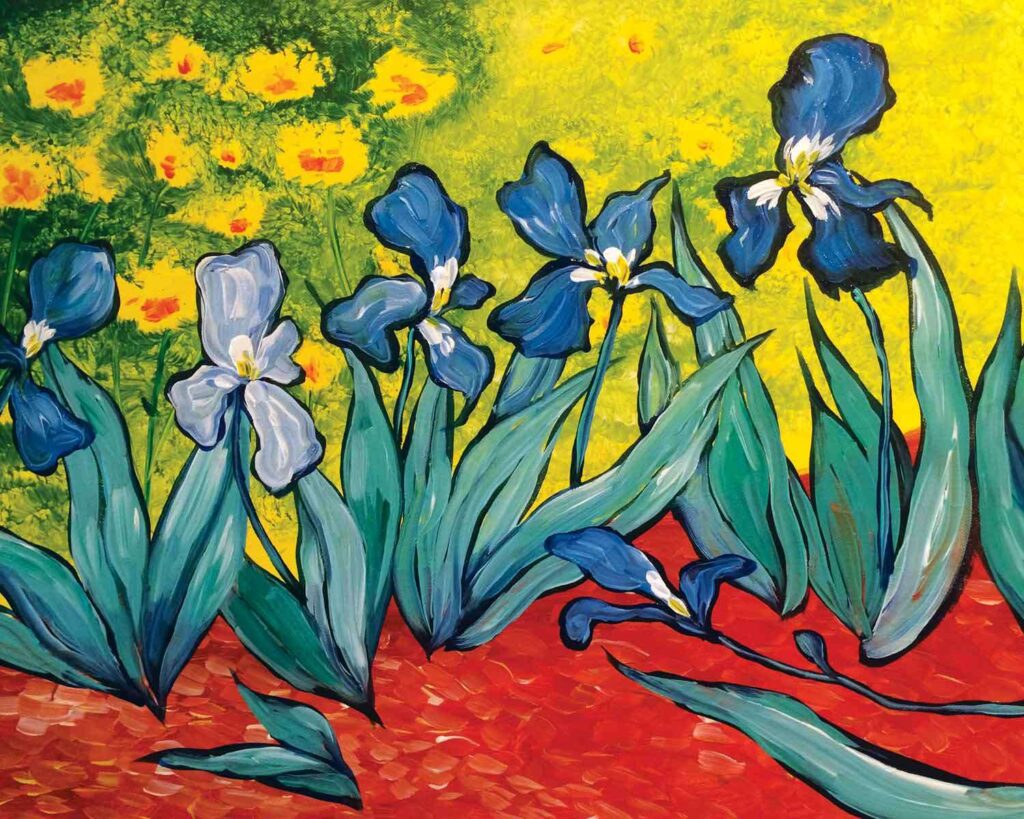
We are all familiar with Van Gogh’s sunflowers, but much less is known about his series of iris paintings. They were painted in the hospital garden at Saint Paul-de-Mausole asylum near Provence in 1890, the year before he died. He called painting ‘the lightening conductor for my illness,’ because he felt that he could keep himself from going insane by continuing to paint.
SAINT PAUL-DE-MAUSOLE ASYLUM
At the end of his life, painting the garden at the asylum Saint Paul-de-Mausole went some way in easing his anxiety following the self mutilation episode and well documented breakdown. In May 1889, Vincent had committed himself to this former monastery and quiet retreat in Saint-Remy-de-Provence which catered for the wealthy and had been a sanctuary for over a thousand years.
The beautiful gardens and surrounding landscapes became his new focus and he produced roughly 150 paintings including the very famous The Starry Night and Irises. It provided him with subjects that inspired and brought him great joy after the terrible episode which ended his friendship with Paul Gauguin. Van Gogh stayed at the asylum for 374 days and painted roughly two canvases each day.
He was able to paint the iris prolifically thanks in part to the quiet surroundings and space he inhabited. The asylum was only half full when he arrived, so he was afforded a second-story bedroom but also, crucially, a ground floor room which he used as his studio.
JAPANESE WOODBLOCK PRINTS
The series of iris paintings began in his very first week at the asylum. Although many considered them finished works, they were intended only as studies – a way of experimenting with expressive brushstrokes and dark contours. The dark elements were directly influenced by the popular ukiyo-e Japanese woodblock prints of the 17th century, works by Hokusai and Hiroshige that so enamoured the post impressionists at that time.
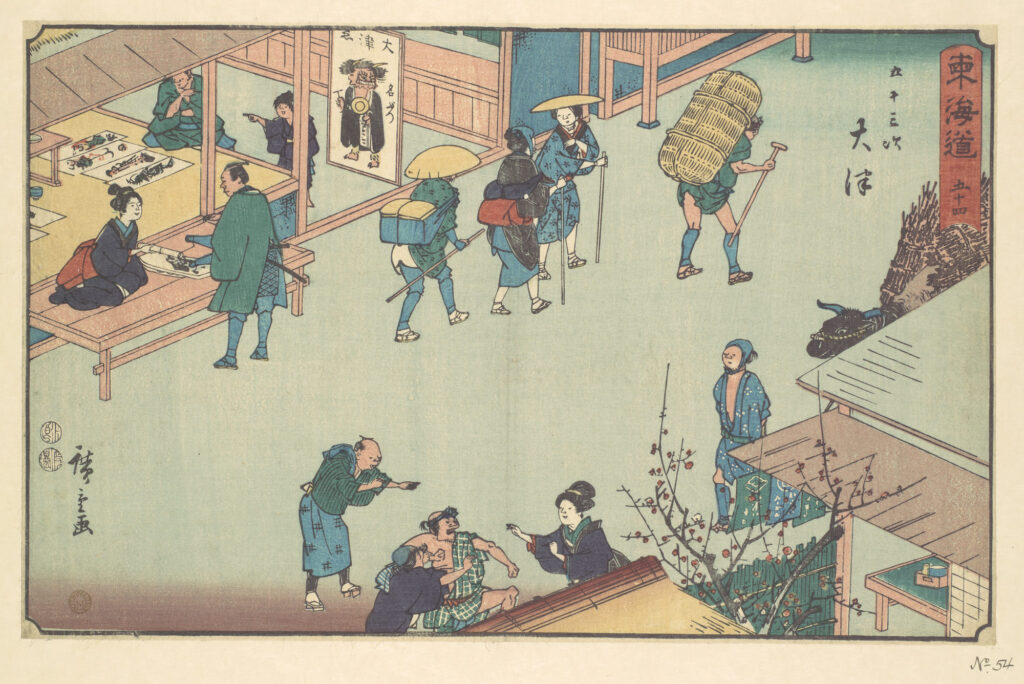
Artists like Monet and Degas were particularly inspired by the subject matter because of their use of perspective and composition. Strong outlines, unusual angles and close-up views mirror those of the printmakers. Japonism was closely associated with this group of artists and Monet in particular amassed a huge collection of woodblock prints. Katsushika Hokusai was a particular favourite, known for his series of Mount Fuji prints.
THE STARRY NIGHT
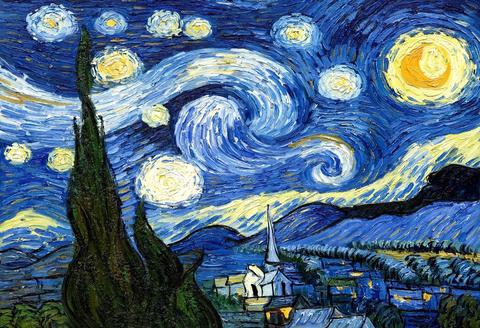
Van Gogh sent his canvases to his brother and agent, Theo, who submitted Irises and The Starry Night to the Salon des Independants in September 1889. About The Starry Night, Theo comments, “It strikes the eye from afar. The Irises are a beautiful study full of air and life,” wrote his brother.
The Starry Night was painted in June 1889 and describes the view from his east facing bedroom window, through the iron bars just before sunrise. It is widely regarded as one of his most famous and recognisable works – a painting borne out of his imagination. He painted it in his ground floor studio, drawing on his memory of the view – no fewer than 21 times. “I can see an enclosed square of wheat….above which, in the morning, I watch the sun rise in all its glory,” he wrote in a letter to Theo on 23rd May 1889.
The cypress tree in this painting gives us a sense of the landscapes that surrounded the asylum, typical of Southern France. Les Alpilles (the Little Alps) overlook the village, surrounded by groves of trees, wild thyme and rosemary. The flora and landscapes were idyllic, but life in the asylum was hard. Van Gogh would have stayed in the men’s block and lived in a small ‘cell’ with only modest and functional domesticity.
He suffered from ‘auditory hallucinations’ which goes some way to explaining why he wanted to silence the noises by cutting off his own ear. The walled garden offered him peace and sanctuary and was where he spent many of his happiest hours. If you visit today, you will experience the iris garden as Van Gogh would have found it – the same views, the water fountain and landscapes beyond the garden. Behind the asylum was a ravine and a quarry, olive groves, almond trees and Les Alpilles.
THE SAINT-REMY PERIOD
The twelve months he spent at the asylum, known as ‘the Saint-Remy period’, saw a remarkable development in his art. The colour choices become more muted in contrast to the vivid palette of the Arles period. This possibly reflects his subdued mood. Although the colour combinations are more subtle, the brushwork is equally energetic. There more swirling and sinuous lines than ever before.
“It was doubtless Van Gogh’s passion for art meant that he was able to cope with asylum life,” claims Martin Bailey, biographer for Starry Night: Van Gogh at the Asylum. We can be certain that it gave him purpose and must have helped him deal with the indignities of daily life. His mental fragility is never evident in his art – it continued to be self possessed and vibrant. His massive output of roughly 150 surviving paintings (there are said to be a handful which have been lost) averages at 2 paintings per day.
THE MOST EXPENSIVE PAINTING EVER SOLD
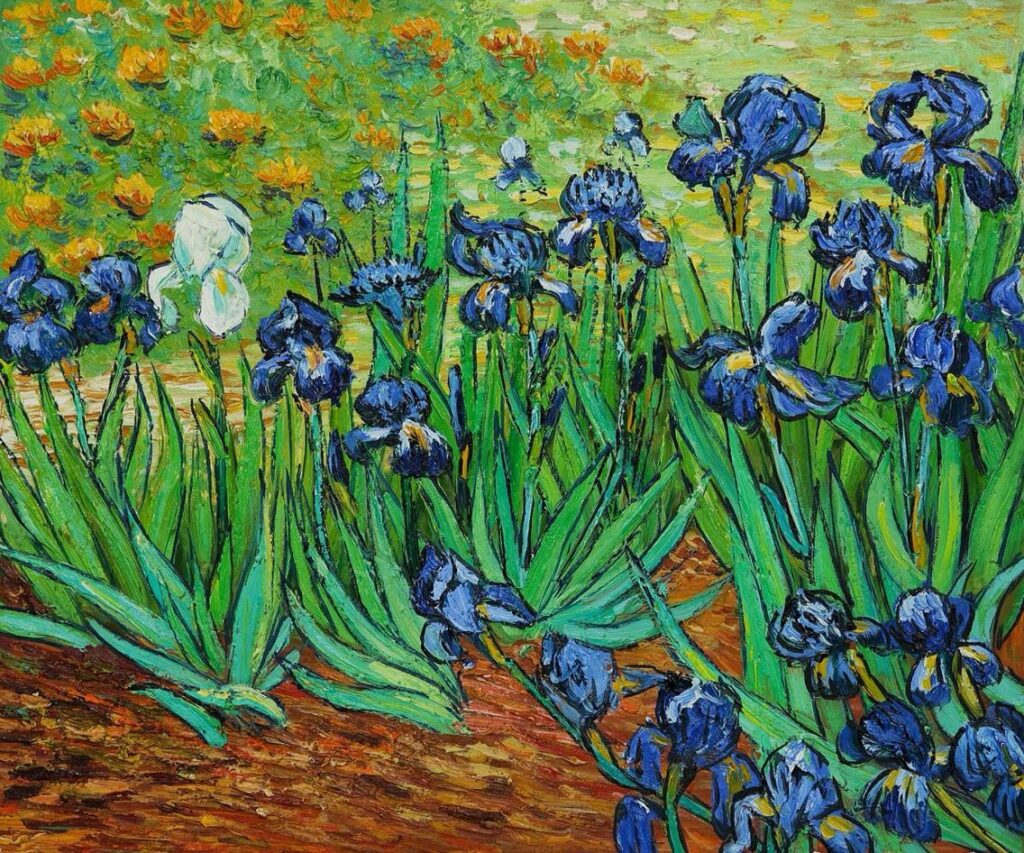
Irises is on the list of the most expensive paintings ever sold, selling for 54 million dollars in 1987. The painting is currently on display at The Getty Center in Los Angeles.
The painting has been owned by Julien ‘Pere’ Tanguy – an art dealer who sold it to the art critic Octave Mirbeau, one of Van Gogh’s first supporters. Mirbeau paid 300 francs for it.
VAN GOGH SUNFLOWERS & IRISES PAINTING WORKSHOP
with Sarah Wimperis
Saturday 25th April 2020
Attic Studios, Pegasus Art
10am – 4pm £60
All abilities Mixed media – watercolour, water mixable oils or acrylic
BOOK ONLINE HERE.
If you would like to commission feature writing or copywriting, get in touch here.
